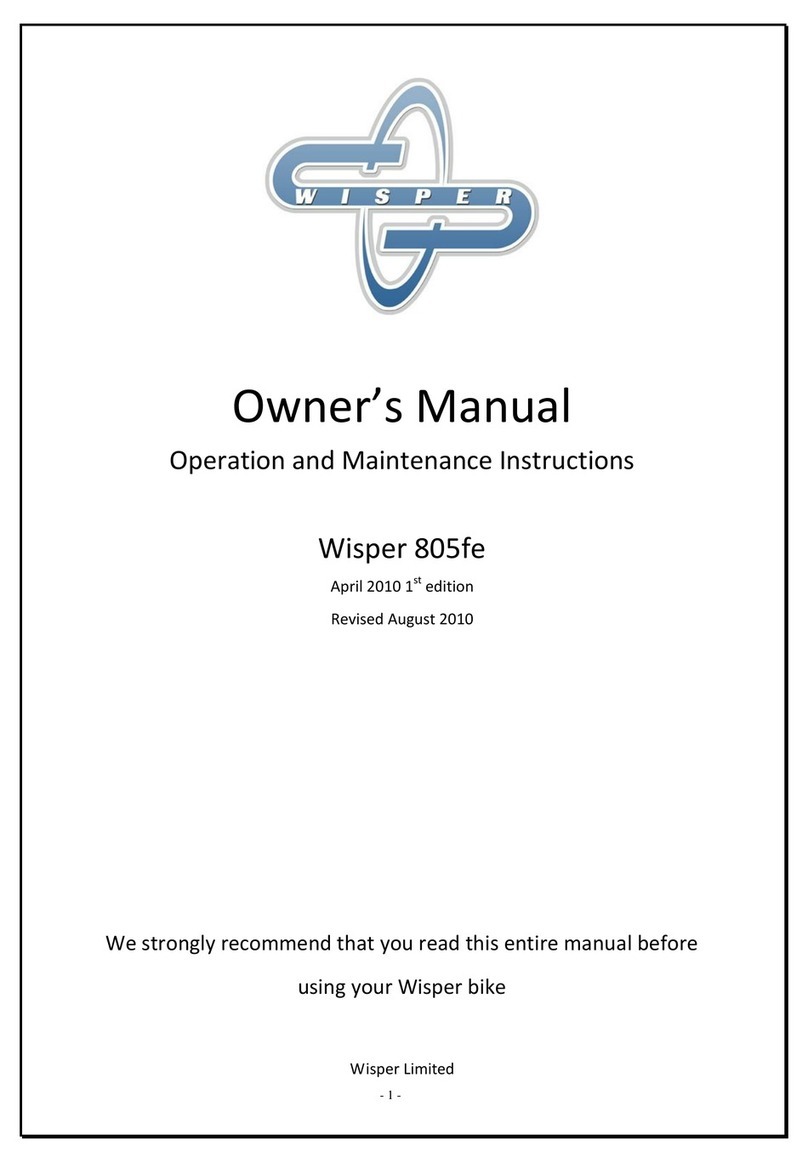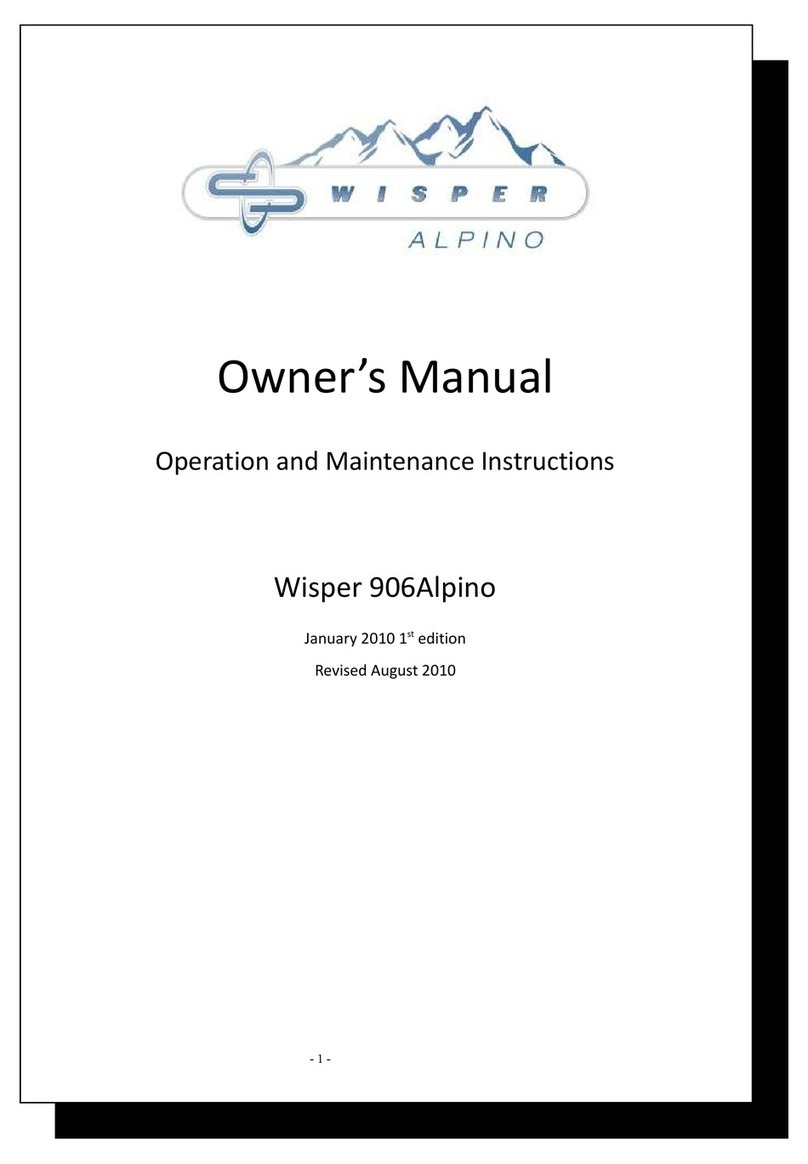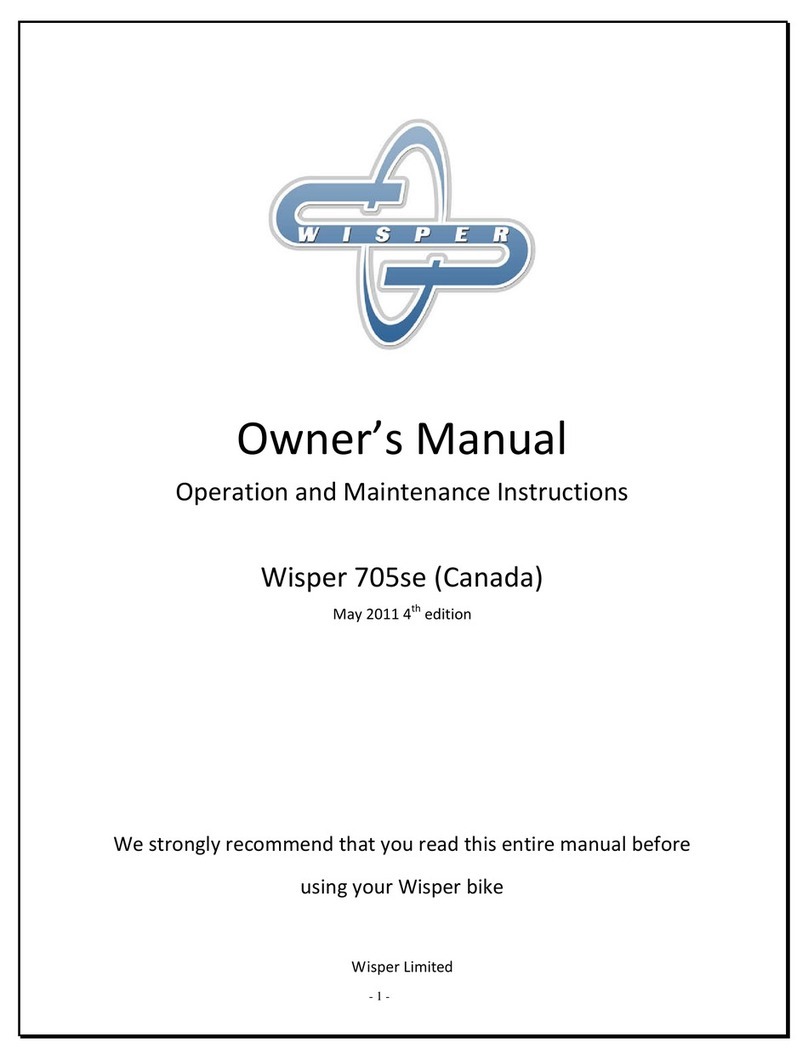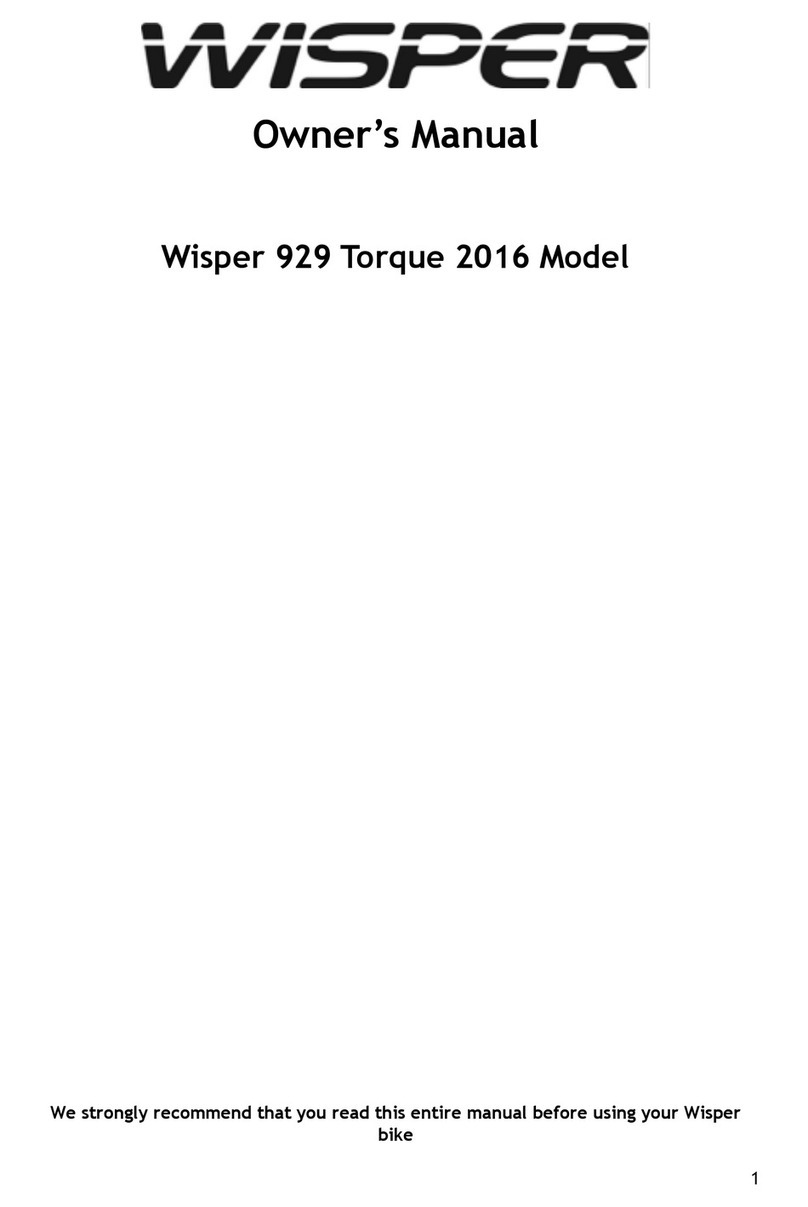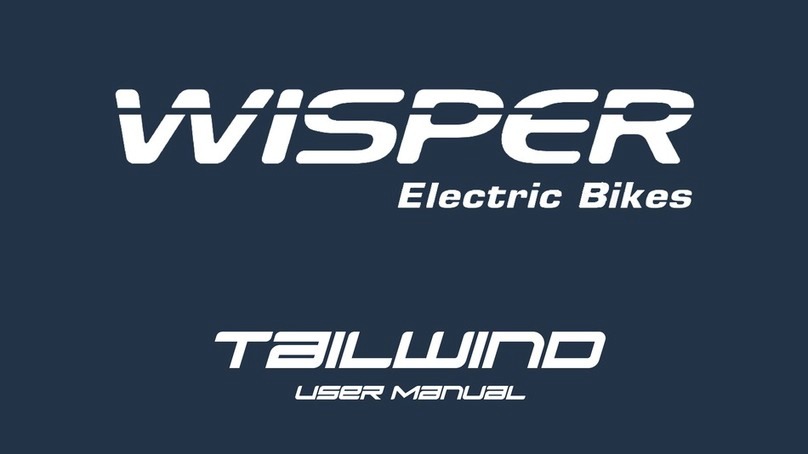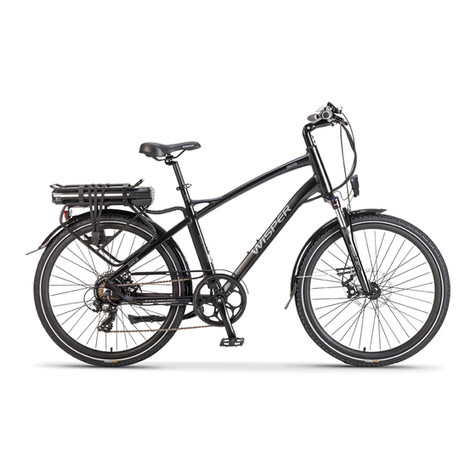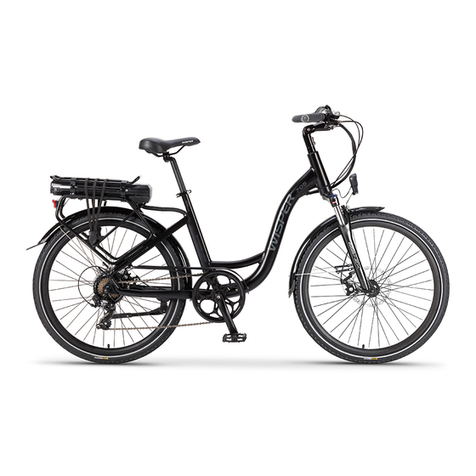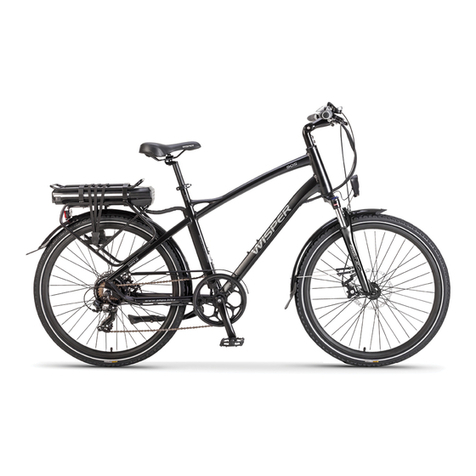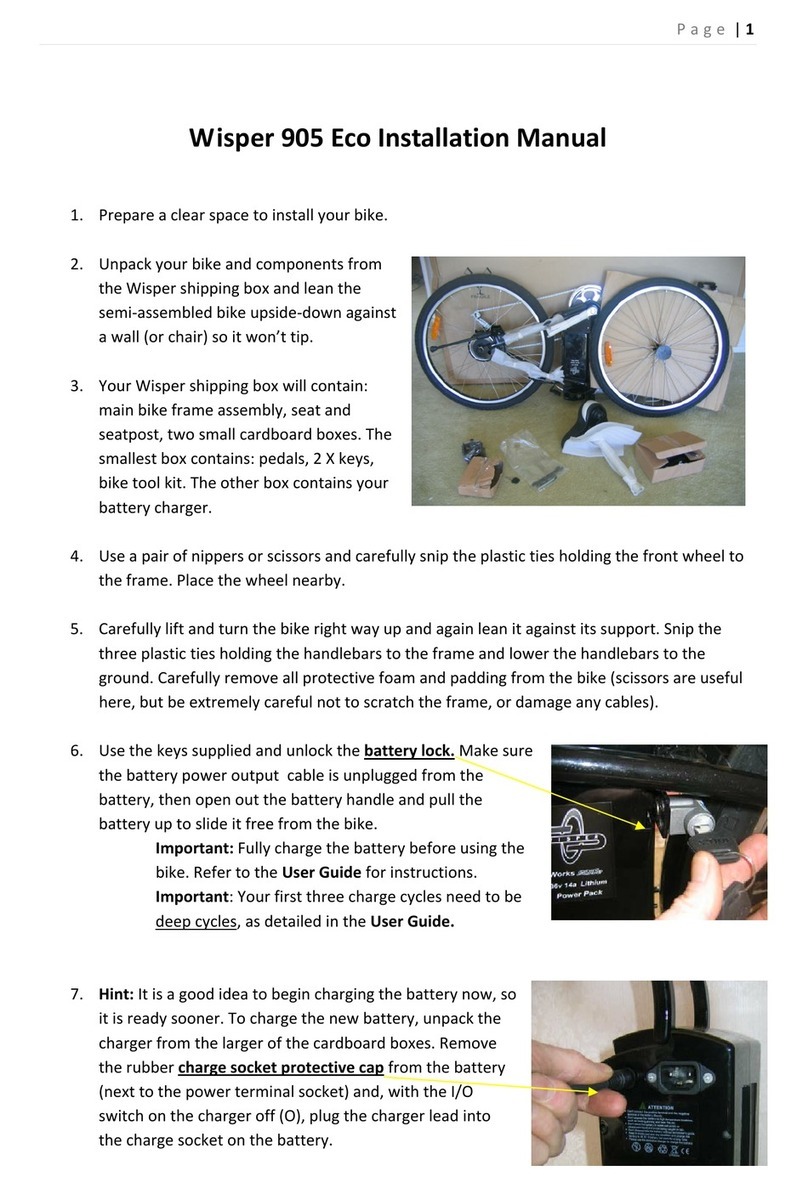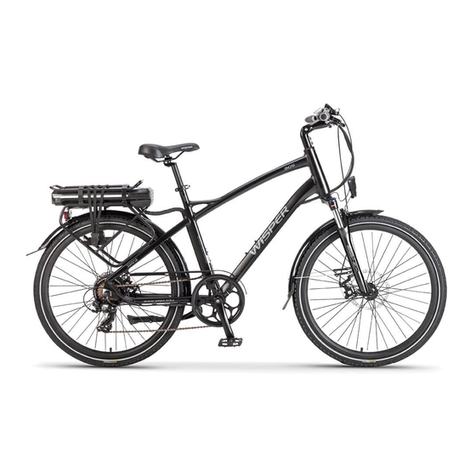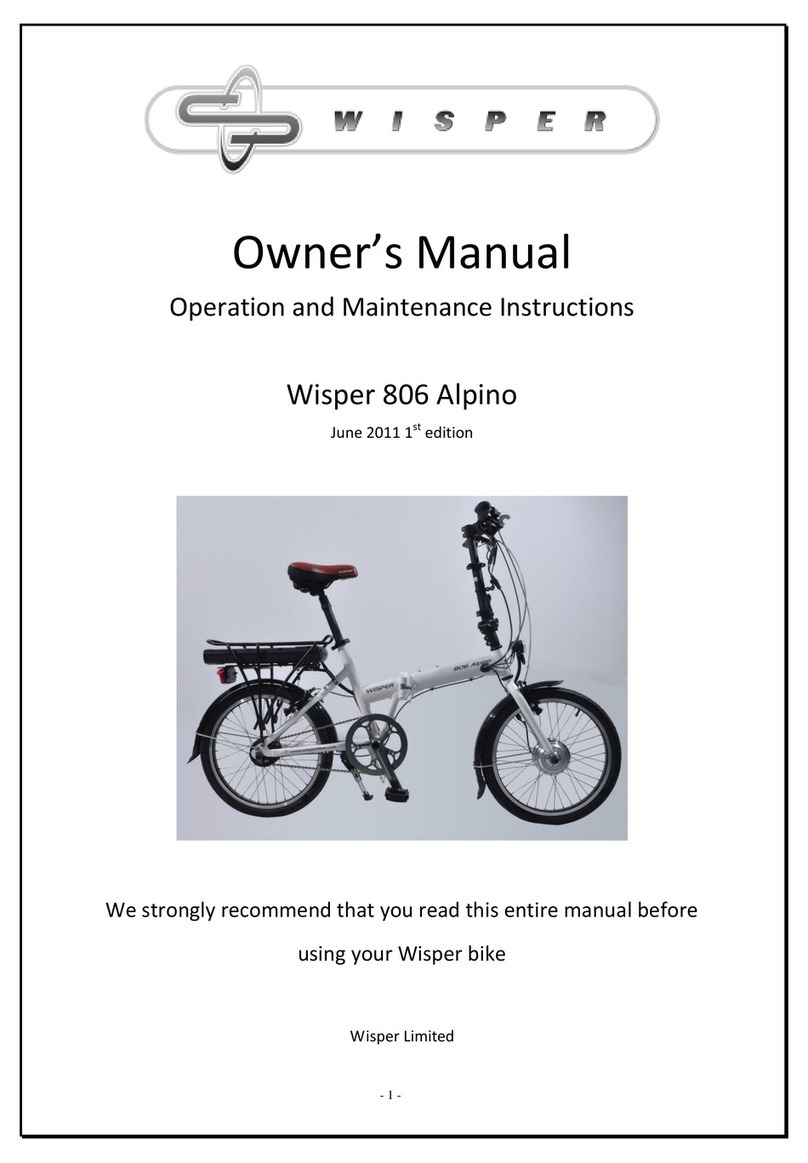Contents
1Introduction......................................................................................................................................3
2Part 1 - Caring for your Wisper bike and pre use checks .................................................................4
2.1 Before you set off for the first time ..........................................................................................4
2.2 Before each use.........................................................................................................................5
2.3 Battery care ...............................................................................................................................6
2.4 Recharging your battery............................................................................................................6
2.5 Water.........................................................................................................................................7
2.6 Maintenance and adjustments .................................................................................................7
2.7 Technical specifications & performance ...................................................................................8
2.8 Simple Trouble shooting..........................................................................................................11
3Part 2 Controls and Equipment ......................................................................................................13
3.1 Battery on off and battery lock ...............................................................................................13
3.2 LCD function description .........................................................................................................13
3.3 The LIGHTS ..............................................................................................................................15
3.4 Pedelec mode and ASSIST mode.............................................................................................16
3.5 Throttle Mode .........................................................................................................................17
3.6 Battery capacity meter, riding style and affect on range........................................................17
3.7 Gear shifter..............................................................................................................................19
3.8 Brakes......................................................................................................................................20
3.9 The front connection box (manifold) ......................................................................................21
3.10 Quick release saddle height, handlebar adjustment and folding mechanism......................22
3.11 Saddle post suspension.........................................................................................................25
3.12 Rims and spokes....................................................................................................................25
3.13 Drive wheel removal .............................................................................................................26
3.14 Chain adjustment ..................................................................................................................27
4Warranty ........................................................................................................................................28
4.1 Battery maintenance and user responsibilities.......................................................................29
5Service ............................................................................................................................................30
6Appendix 1 Pre Delivery inspection and 300 mile service check list..............................................31

